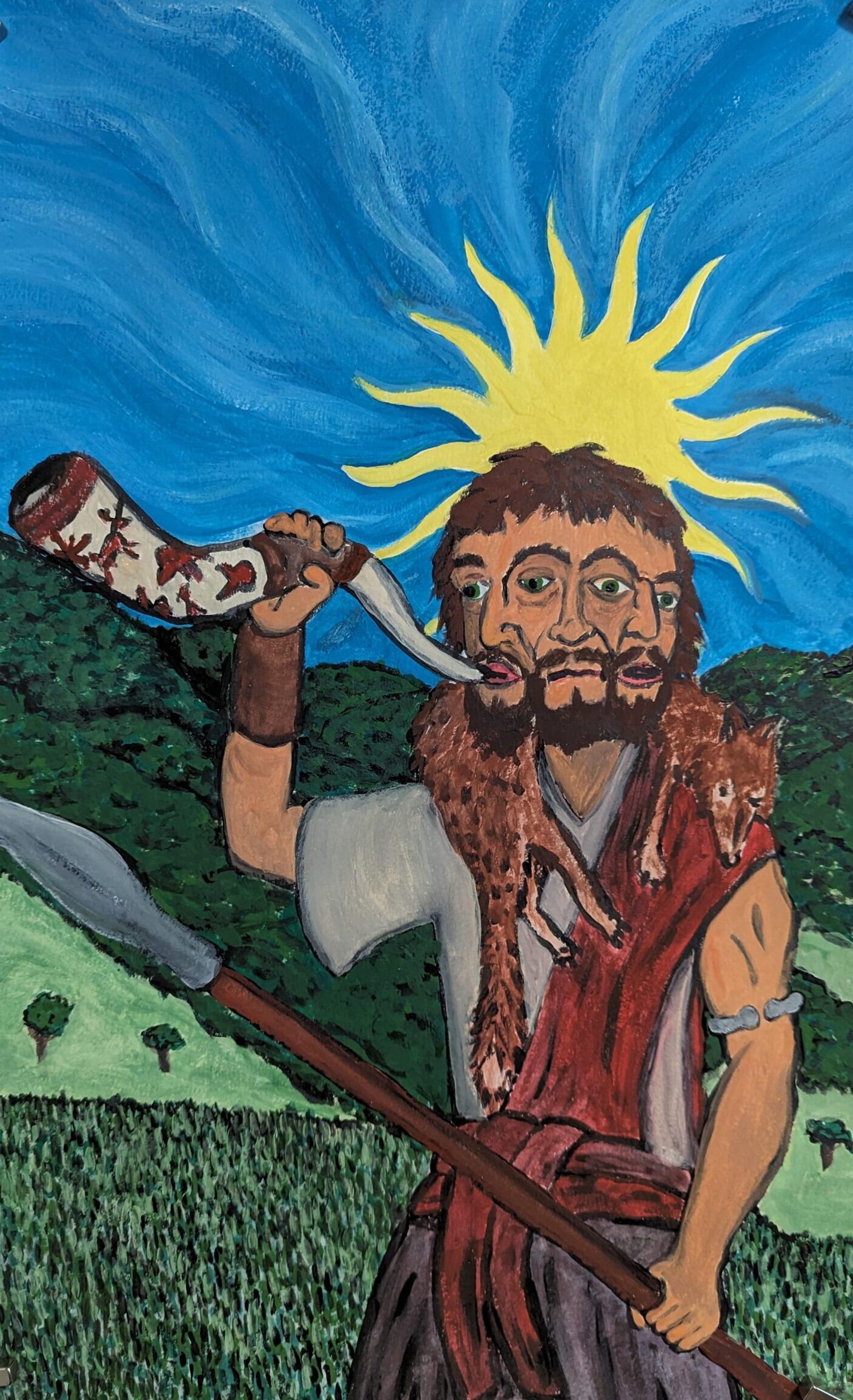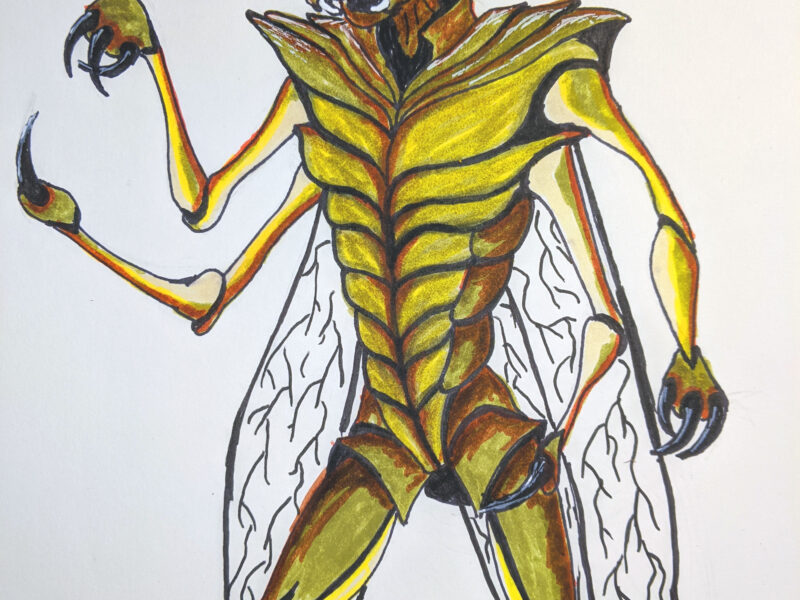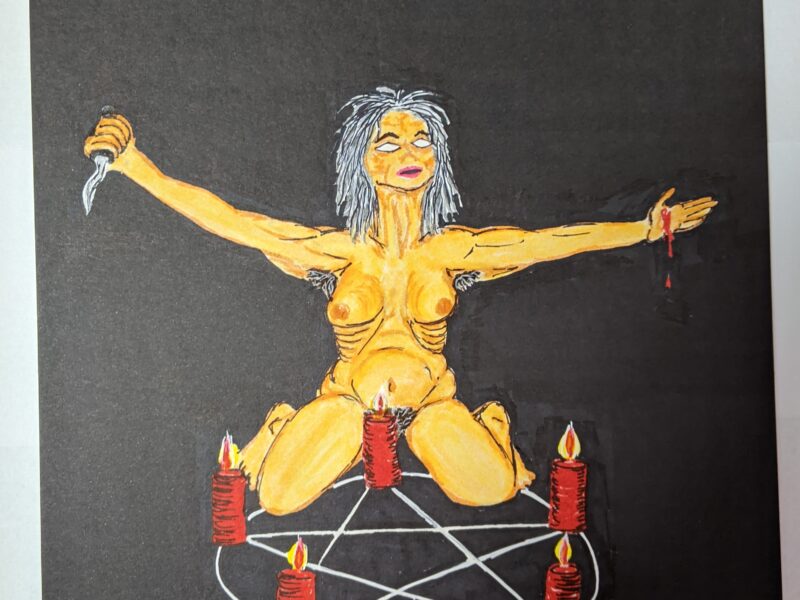Drawing and painting figures from various world religions can be fraught with peril. I try to be careful not to pollute the belief systems with my own images, while balancing my own artistic license. It gets really wonky when we are illustrating religious figures from the Celtic world because so much of it was completely destroyed and ripped out by its root by Roman and Catholic forces over a thousand years. What does remain comes through a filter of that same power structure. Still, what we do know is interesting and worth reimagining. This one is done in gouache on 12×18 140 lb watercolor paper.
Celtic God Lugus (Lughus)
Religious Figure:
Overview: Lugus, also known as Lugh in Irish mythology, is a prominent deity in Celtic religion, often associated with skill, craftsmanship, and sovereignty. He is considered one of the most important gods across various Celtic cultures, including the Gauls, Irish, and Welsh.
Attributes and Domains:
- Skill and Mastery: Lugus is often depicted as a god of all arts and crafts. He is associated with skills and knowledge, particularly in areas such as metallurgy, weaving, and bardic arts.
- Sovereignty and Kingship: He is also connected to rulership and kingship, symbolizing the ideal qualities of a leader.
- Sun and Light: In some traditions, Lugus is linked to the sun and light, embodying brightness and enlightenment.
Mythological Roles:
- Lugh in Irish Mythology: In Irish mythology, Lugh is known as Lugh Lámhfhada (Lugh of the Long Arm). He is a central figure in the mythological cycle, particularly in the tales of the Tuatha Dé Danann, a supernatural race in Irish lore.
- The Battle of Mag Tuired: Lugh plays a crucial role in this myth, where he leads the Tuatha Dé Danann to victory against the Fomorians, demonstrating his prowess and strategic genius.
- Samildánach: Lugh is often referred to as Samildánach, meaning “many-skilled,” reflecting his mastery over various arts and crafts.
Cult and Worship:
- Worship Sites: Lugus was worshipped across the Celtic world, with many dedications found in places such as Gaul (modern France) and the Iberian Peninsula. He was venerated at tribal sanctuaries and important religious sites.
- Lughnasadh: An important festival in his honor, Lughnasadh, was celebrated in early August. It was a time of feasting, games, and agricultural rituals, marking the beginning of the harvest season.
Art and Archaeology:
Depictions in Art:
- Iconography: Lugus is often depicted as a youthful, handsome figure, sometimes with attributes such as a spear or sling, symbolizing his warrior aspect. He may also be shown with symbols of craftsmanship, such as tools or instruments.
- Triads and Triplism: In some representations, Lugus appears in a triadic form, reflecting a common Celtic motif of triplism, which signifies completeness and balance. This can be seen in statues and carvings depicting three-headed figures or triads of deities.
Archaeological Evidence:
- Inscriptions and Altars: Numerous inscriptions and altars dedicated to Lugus have been found, particularly in Gaul. These often include dedications from worshippers seeking his favor or expressing gratitude.
- Leiden Plate: A notable artifact is the Leiden Plate, a bronze plaque from the Netherlands depicting a god, likely Lugus, with attributes suggesting craftsmanship and war.
- Lugdunum (Modern Lyon): The city of Lyon, originally named Lugdunum, was an important center of worship for Lugus in Roman Gaul. Archaeological finds in the area include dedications and altars to Lugus.
- Mythological Artifacts: Artifacts such as the Turoe Stone in Ireland, with its intricate carvings, reflect the artistic and cultural influences of Lugus.
Interpretations and Influence:
- Syncretism with Roman Gods: During the Roman period, Lugus was often syncretized with the Roman god Mercury, who shared similar attributes of commerce, travel, and eloquence. This syncretism is evident in inscriptions and religious practices in Roman Gaul.
- Legacy in Celtic Cultures: The legacy of Lugus persists in various forms in Celtic cultures. In modern times, Lughnasadh is still celebrated by some as a neo-pagan festival, honoring the traditions and myths associated with this ancient deity.
In summary, Lugus (Lughus) stands out as a multifaceted deity in Celtic religion, embodying skill, leadership, and enlightenment. His worship spanned a vast geographical area, and his influence is evident in art, archaeology, and cultural practices that have persisted through the centuries.



